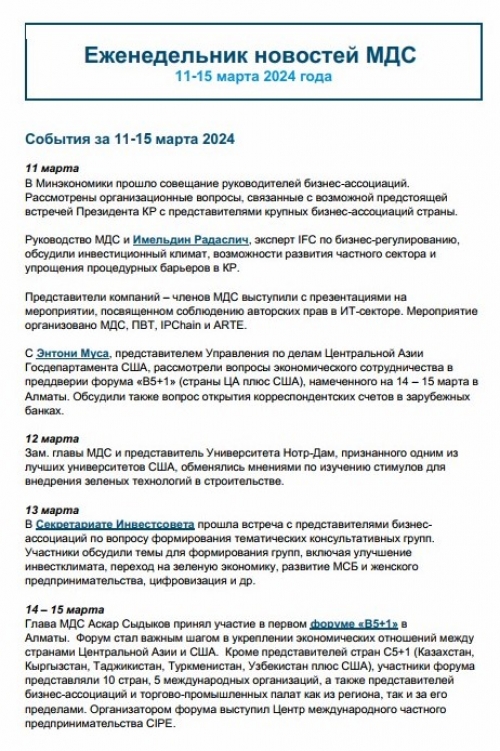Analysis /
Articles /
Microfinance sector in Kyrgyzstan
The microfinance sector, which emerged in Kyrgyzstan in 1995, is today a leader in the Central Asia. Over the last 15 years, the sector has been developing steadily and rapidly.
Microfinance is becoming more common in the Kyrgyz market, complementing the traditional banking segment. The microfinance sector aims to increase economic activity, create jobs and reduce poverty.
In 2011 the loan portfolio of microfinance sector exceeded 13.78 billion soms, portfolio growth for the year was 49.9 percent, the number of customers - 438.500 people (an increase of 26.3 percent). The main demand of the population was agricultural loans, trade and consumer loans. More than 80 percent of borrowers live in rural areas.
Currently, there are over 400 companies licensed to engage in financial activities in Kyrgyzstan. The interest rate on loans is made up of basic components such as the cost attracted financial resources (17 percent), the risk of loan default (a component of the potential loss of 2 percent), operating expenses (24 percent) and the rate of return (2 percent).
Microfinance provides financial services to the population without access to banking services due to low income, the need for a small amount of the loan, the inadequacy or absence of collateral, as well as the lack of banking infrastructure in the region. Microfinance includes microcredit, microinsurance, a system of savings accounts, money transfers, and other services.
Kyrgyzstan was the first country in Central Asia, where the laws governing the activities of microfinance institutions and credit unions have been developed. The microfinance market in the country has a great diversity of participants engaged in microfinance. Kyrgyzstan’s microfinance sector was developed thanks to the adoption of the Laws "On Credit Unions" in 1999 and "On the microfinance institutions in the Kyrgyz Republic" in 2005, as well as through the support of international donors.
According to the National Bank of the Kyrgyz Republic (NBKR), as of April 30, 2012, the microfinance sector consists of 409 microfinance institutions, including four microfinance companies, 289 micro-credit companies, 116 micro-credit agencies and 210 credit unions. In addition, some commercial banks also provide microfinance services. In recent years, not only the total number of organizations engaged in microfinance has increased, but also their loan portfolio.
Currently Kyrgyzstan’s microfinance unites a variety of financial and lending institutions such as credit unions, micro-credit agencies and microcredit companies, as well as two specialized state organizations - Financial Company for Support of Credit Unions and Kyrgyz Agricultural Finance Corporation.
Credit unions attract funds of its members by purchasing a share of their savings, and provide union members with credit loans. Loans can be ensured and not ensured by a pledge. Microfinance institutions mainly work at their own expense and risk the capital of their founders.
Microfinance institutions in Kyrgyzstan provide financial services to the population that does not have microfinance organizations as well as the commercial banks to monitor the timely repayment of the loan and the borrower's financial condition, creating a credit history, a similar bank. MFI, like commercial banks, check the timeliness of loan repayment and the borrowers’ financial condition and their credit history.
Microfinance institutions and credit unions differ from commercial banks in their social orientation. They can be created in any legal form (joint stock company, limited liability company, cooperative and public fund).
The Kyrgyz Republic was the first among Central Asian countries to adopt, at the national level, the Medium-Term Microfinance Development Strategy for 2006 - 2010, initiated the development of which was the NBKR. After this strategy was completed, the National Bank of the Kyrgyz Republic jointly with the Association of Micro Finance Institutions and the Government, with the technical support of the German Society for International Cooperation (GIZ), have developed a draft strategy and plan for the development of microfinance in 2011 - 2015. According to the NBKR, it is necessary to develop deposits in the microfinance sector and incorporate them into a system of deposit protection. These changes are included in the concept development of the sector until 2015.
The Association of Microfinance Institutions (AMFI) was established in 2005 on the initiative of the four leading microfinance organizations - Bai-Tushum, Kompanion, Frontiers and FINCA. The AMFI coordinates the interaction of its members in the development of microfinance sector, execution of members’ joint projects, as well as promotion and protection of common rights and interests of its members.
According to AMFI, today the microfinance sector faces a lot of problems. Microfinance institutions conduct their activities in terms of market mechanisms, so they depend on the macroeconomic situation in the country including the level of inflation and large amounts of government domestic borrowing at high interest rates. For MFIs, there are no special government credit lines to finance the socially vulnerable segments of the population. In addition, the banks’ fee interest in hedging is too high, 14-15 percent. Due to the poor investment climate the loans attracted in the country, become more expensive. Thus, the legislative framework regulating its activity does not meet the current requirements and needs to be changed.























